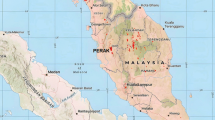Abstract
This paper presents a preliminary examination of archaeobotanical material from pigeon dung samples obtained from Byzantine period destruction levels of a dovecote near the site of Shivta, Israel. Such pigeon dung was a valuable fertilizer in antiquity and would not have been abandoned without a reason. The plant remains from the dung provide direct evidence of pigeon diet and the local environment during the Byzantine period. Eleven plant taxa, represented by either seeds and/or plant parts (cereal chaff material), including five wild taxa, one legume, four fruit/nut taxa and several unidentified seed fragments were recovered. The most common seeds found were from weeds of the genus Thymelaea sp., and Ficus (fig). The finds indicate that the birds in the dovecote consumed a mixed diet of wild seeds including Thymelaea sp. and Fumaria sp. (fumitory), and small fruits of Vitis (grape), Ficus (fig), Olea (olive) and Phoenix (date). The sample analyzed also included Rumex (dock), Carex (sedge) and Androsace which may not have come from the feed. Apparently the pigeons were free to forage in the desert, the fallowed fields and refuse piles or/and were intentionally fed agricultural by-products including wild plants.












Similar content being viewed by others
References
Anderberg A (1994) Resedaceae-Umbelliferae (Atlas of seeds, part 4). Swedish Museum of Natural History, Stockholm
Ash HB, Forster ES, Heffner E (trans) (1941) Columella. On agriculture, vol 3. Harvard University Press, Cambridge
Beijerinck W (1947) Zadenatlas der Nederlandsche Flora. Veenman, Wageningen (Facsimile edn 1976, Backhuys en Meesters, Amsterdam)
Berggren G (1969) Salicaceae-Cruciferae (Atlas of seeds, part 2). Swedish Museum of Natural History, Stockholm
Berggren G (1981) Cyperaceae (Atlas of seeds, part 3). Swedish Natural Science Research Council, Stockholm
Blamey M, Grey-Wilson C (1993) Mediterranean wild flowers. HarperCollins, London
Boardman S, Jones G (1990) Experiments on the effects of charring cereal plant components. J Archaeol Sci 17:1–11
Brown RGB (1969) Seed selection by pigeons. Behaviour 34:115–131
Cappers RTJ (2006) Roman foodprints at Berenike: archaobotanical evidence of subsistence and trade in the eastern desert of Egypt. (Cotsen Institute of Archaeology Monograph 55). Cotsen Institute of Archaeology, University of California, Los Angeles
Condit IJ (1969) Ficus: the exotic species. University of California, Division of Agricultural Sciences, Davis
Danin A (2004) Distribution atlas of plants in the Flora Palaestina area. The Israel Academy of Sciences and Humanities, Jerusalem
Danin A, Orshan G (1999) Desert and coastal vegetation (Vegetation of Israel, vol 1). Backhuys, Leiden
Davies G (2000) Feeding pigeons. On-line source: http://www.suite101.com/article.cfm/chickens_retired/35035
Feinbrun-Dothan N (1986) Flora Palaestina: Part IV. Israel Academy of Science and Humanities, Jerusalem
Hirschfeld Y (2003) Social aspects of the Late-Antique village of Shivta. Journal of Roman Archaeology 16:395–408
Hirschfeld Y, Tepper Y (2006) Columbarium towers and other structures in the environs of Shivta. Journal of the Institute of Archaeology of Tel Aviv University 33:83–116
Hooper WD (trans) (1934) Varro. On agriculture. Harvard University Press, Cambridge
Inman AJ, Lefebvre L, Giraldeau L (1987) Individual diet differences in feral pigeons: evidence for resource partitioning. Anim Behav 35:1902–1903
Kislev ME, Hartmann A, Bar-Yosef O (2006) Early domesticated fig in the Jordan valley. Science 31:1372–1380
Kraemer CJ (1958) Excavations at Nessana (Non Literary Papyri, vol 3). Princeton University Press, Princeton
Negev A (1993) Sobata. The New Encyclopedia of Archaeological Excavations in the Holy Land 4:1404–1410
Post G (1932) Flora of Syria, Palestine and Sinai. American Press, Beirut
Rackham H (trans) (1952–1967). Pliny the elder. Natural history. Harvard University Press, Cambridge
Rixford GP (1918) Smyrna fig culture. U.S. Department of Agriculture Bulletin 732:1–48
Segal A (1983) Shivta: the Byzantine city of Shivta (Esbeta), Negev desert, Israel. BAR Internat Ser 179, Oxford
Shereshevski J (1991) Byzantine urban settlements in the Negev Desert, Beer-Sheve (vol 5). Ben Gurion University, Beer-Sheve
Tepper Y (1986) The rise and fall of dove-raising. In: Kasher A, Oppenheimer A, Rappaport U (eds) Man and land in Eretz-Israel in antiquity (in Hebrew). Yad Izhak Ben Zvi, Jerusalem, pp 170–196
Tepper Y (2007a) Soil improvement and agricultural pesticides in antiquity: examples from archaeological research in Israel. Proceeding Middle East gardens traditions: unity and diversity, (Dumbarton Oaks Colloquium on the History of Landscape Architecture 31). Dumbarton Oaks, Washington DC, pp 41–52
Tepper Y (2007b) Columbarium, Peristeron, and pigeon tower (Shovakh): pigeon raising in Eretz-Israel at the Hellenistic, Roman and Byzantine period. In: Arbel B, Terkel J, Menache S (eds) Human beings and other animals in historical perspective. Carmel, Jerusalem, pp 133–160 (in Hebrew)
Valdeyron G, Lloyd DG (1979) Sex differences and flowering phenology in the common fig, Ficus carica L. Evolution 33:673–685
Van der Veen M (1992) Crop husbandry regimes. Sheffield Archaeological Monograph 3, Collis, Sheffield
Wagner G (1988) Comparability among recovery techniques. In: Popper V, Hastorf C (eds) Current palaeoethnobotany: analytical methods and cultural interpretations of archaeological plant remains. University of Chicago Press, Chicago, pp 17–35
Wilson DG (1984) The carbonization of weed seeds and their representation on macrofossil assemblages. In: Van Zeist W, Casparie WA (eds) Plants and ancient man: studies in palaeoethnobotany. Balkema, Rotterdam, pp 201–206
Weed Control Board. Written findings of the state noxious weed control board—Class A weed—http://www.nwcb.wa.gov/weed_info/Thymelaea_passerina.html
Zohary M (1966) Flora Palaestina (part 1). Israel Academy of Science and Humanities, Jerusalem
Zohary M (1972) Flora Palaestina (part 2). Israel Academy of Science and Humanities, Jerusalem
Zohary D, Hopf M (2000) Domestication of plants in the Old World, 3rd edn. Oxford University Press, Oxford
Acknowledgements
This research is dedicated to the memory of Profesor Yizhar Hirschfeld who loved the desert and encouraged us to continue the Shivta research. Thanks to Baruch Rosen and to Guy Bar-Oz for their helpful remarks.
Author information
Authors and Affiliations
Corresponding author
Additional information
Communicated by A. Fairbairn.
Rights and permissions
About this article
Cite this article
Ramsay, J., Tepper, Y. Signs from a green desert: a preliminary examination of the archaeobotanical remains from a Byzantine dovecote near Shivta, Israel. Veget Hist Archaeobot 19, 235–242 (2010). https://doi.org/10.1007/s00334-010-0238-2
Received:
Accepted:
Published:
Issue Date:
DOI: https://doi.org/10.1007/s00334-010-0238-2




